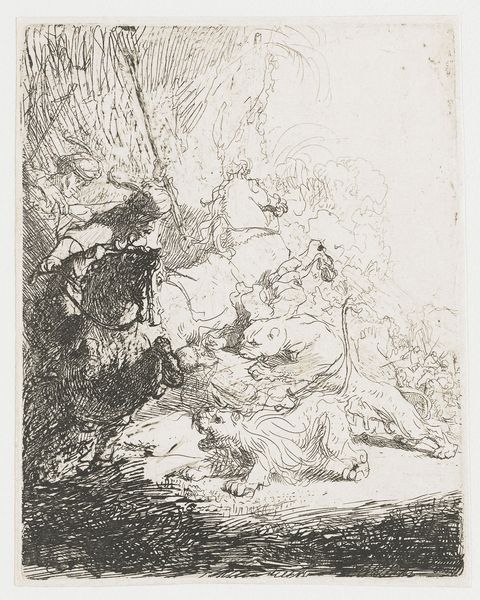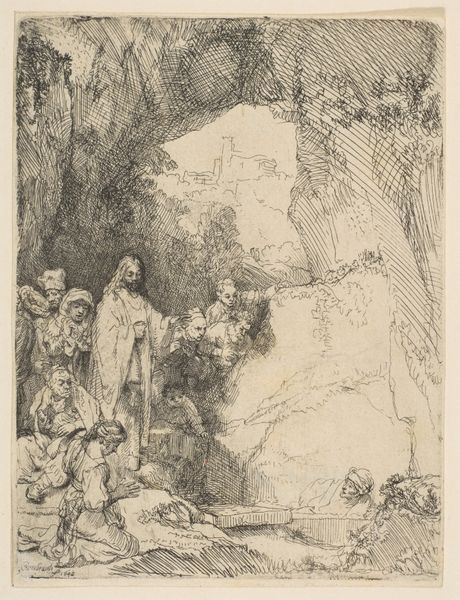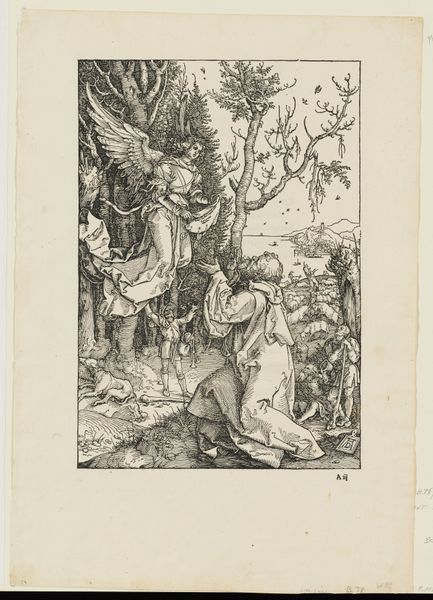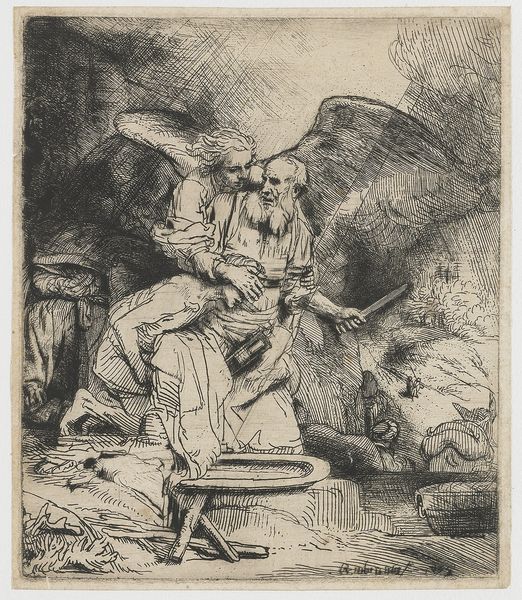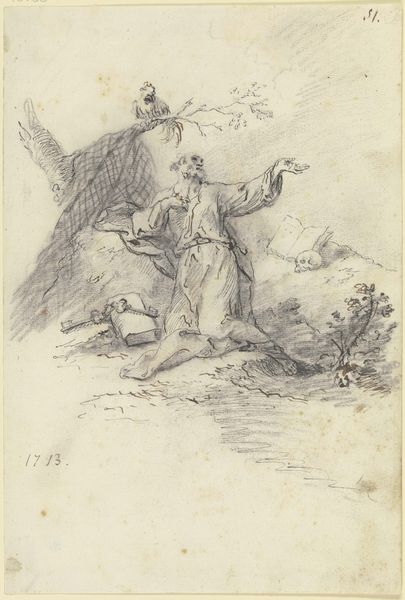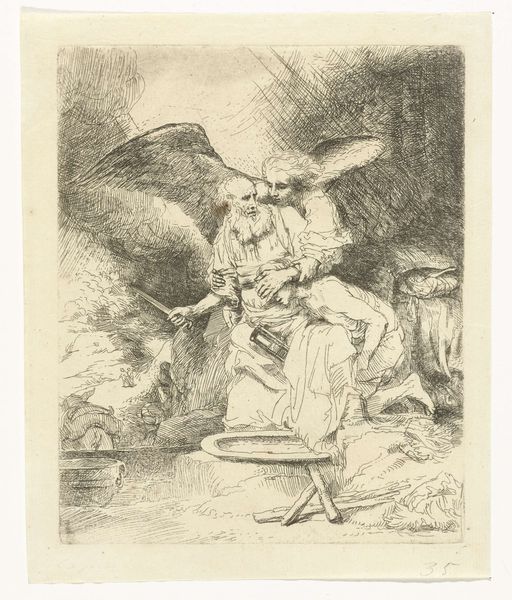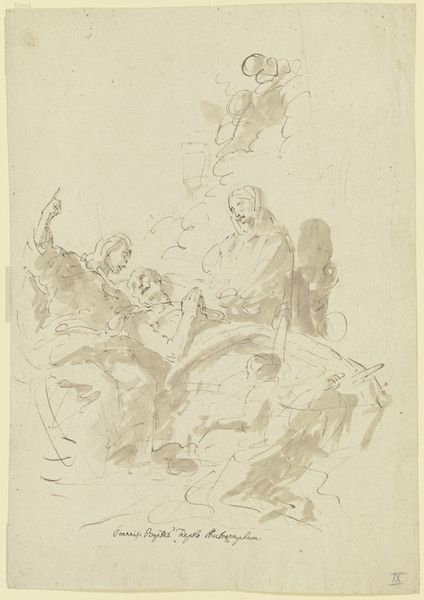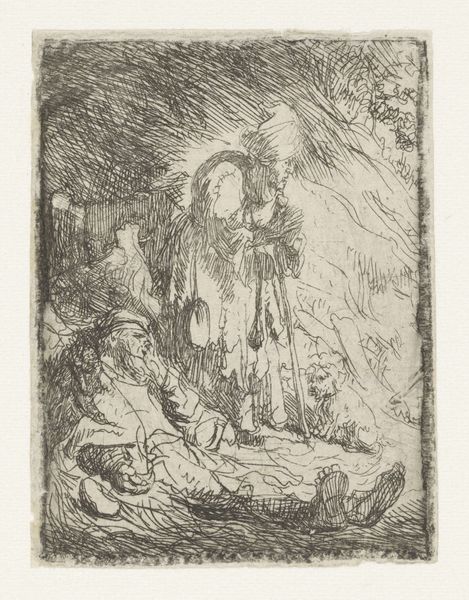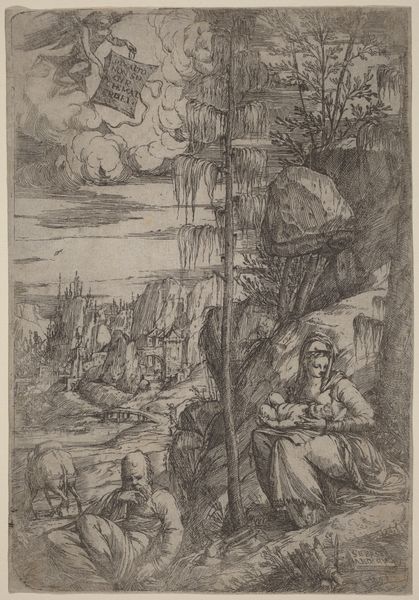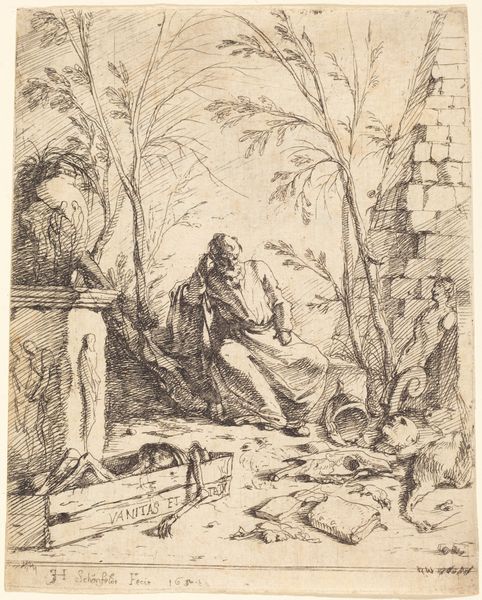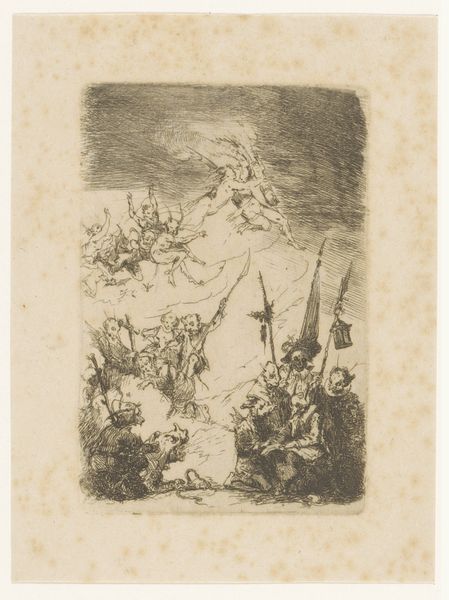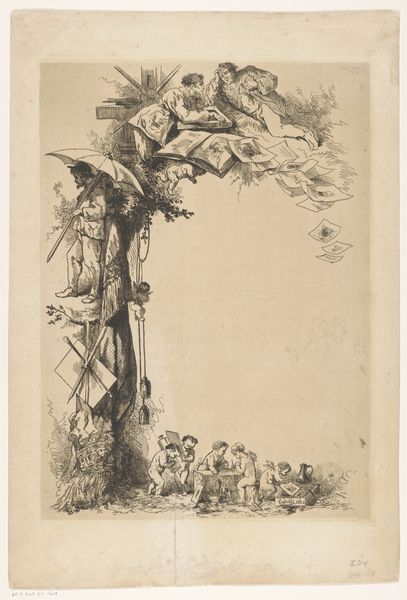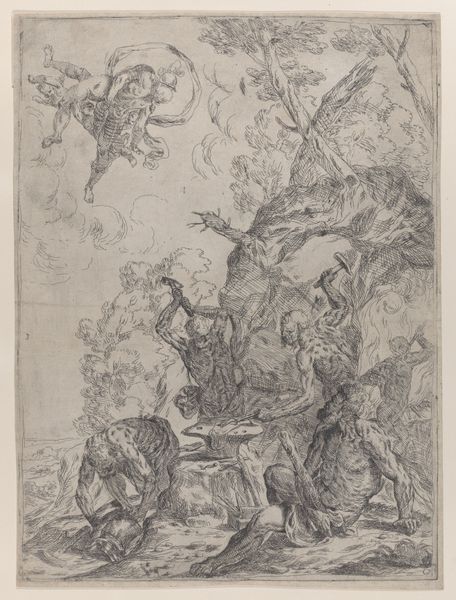
Noah letting the animals into the ark 1625 - 1635
0:00
0:00
drawing, print, etching
#
drawing
#
narrative-art
#
baroque
#
animal
# print
#
etching
#
dog
#
landscape
#
men
#
history-painting
Dimensions: sheet: 5 1/4 x 3 3/4 in. (13.3 x 9.5 cm)
Copyright: Public Domain
Curator: Here we have "Noah letting the animals into the ark" by Giovanni Benedetto Castiglione, created between 1625 and 1635. It’s an etching, so a print made from an incised metal plate. Editor: It feels claustrophobic, almost panicked. Look at all those animals crammed together. The ark itself appears to loom, creating a really tangible sense of confinement. Curator: Yes, Castiglione really highlights the means of production. The dense, cross-hatched lines build up a rich tonal range despite the monochromatic medium. We see how labor intensive creating such detailed texture is. Consider too the materiality of the plate itself—the value in metal and how easily prints like this can be reproduced. Editor: Thinking about its cultural context, this scene speaks volumes about power dynamics. Noah’s power over these animals mirrors humanity’s relationship with the natural world, and perhaps a patriarchal order over different species, dictating who gets saved and who doesn't. This echoes themes of dominance found within religious and societal structures. Curator: It is interesting that you focus on the hierarchical theme when Castiglione's experimental techniques were so important to his practice. He was very innovative in inking and wiping techniques, often using a subtractive process, almost like drawing in light by removing ink, to make the scene dynamic. The blurred edges almost resemble a wash. Editor: True, and the lack of sharp lines gives the impression of movement and the impending chaos within that ark. One could draw parallels to the mass migrations and displacement of populations throughout history, which has clear resonances today. Curator: Absolutely, but for the 17th century viewer this print demonstrates how printmaking can provide multiple examples available for many owners. These images, relatively affordable, would have served a didactic purpose as well as satisfying collectors eager for more and more. Editor: Agreed. Considering that interplay—between artistic innovation and broader sociopolitical significance—certainly enriches our understanding of this complex image, doesn’t it? Curator: It certainly reveals a dialogue between method and metaphor. Editor: Indeed; between labor, animal rights, and representation.
Comments
No comments
Be the first to comment and join the conversation on the ultimate creative platform.
